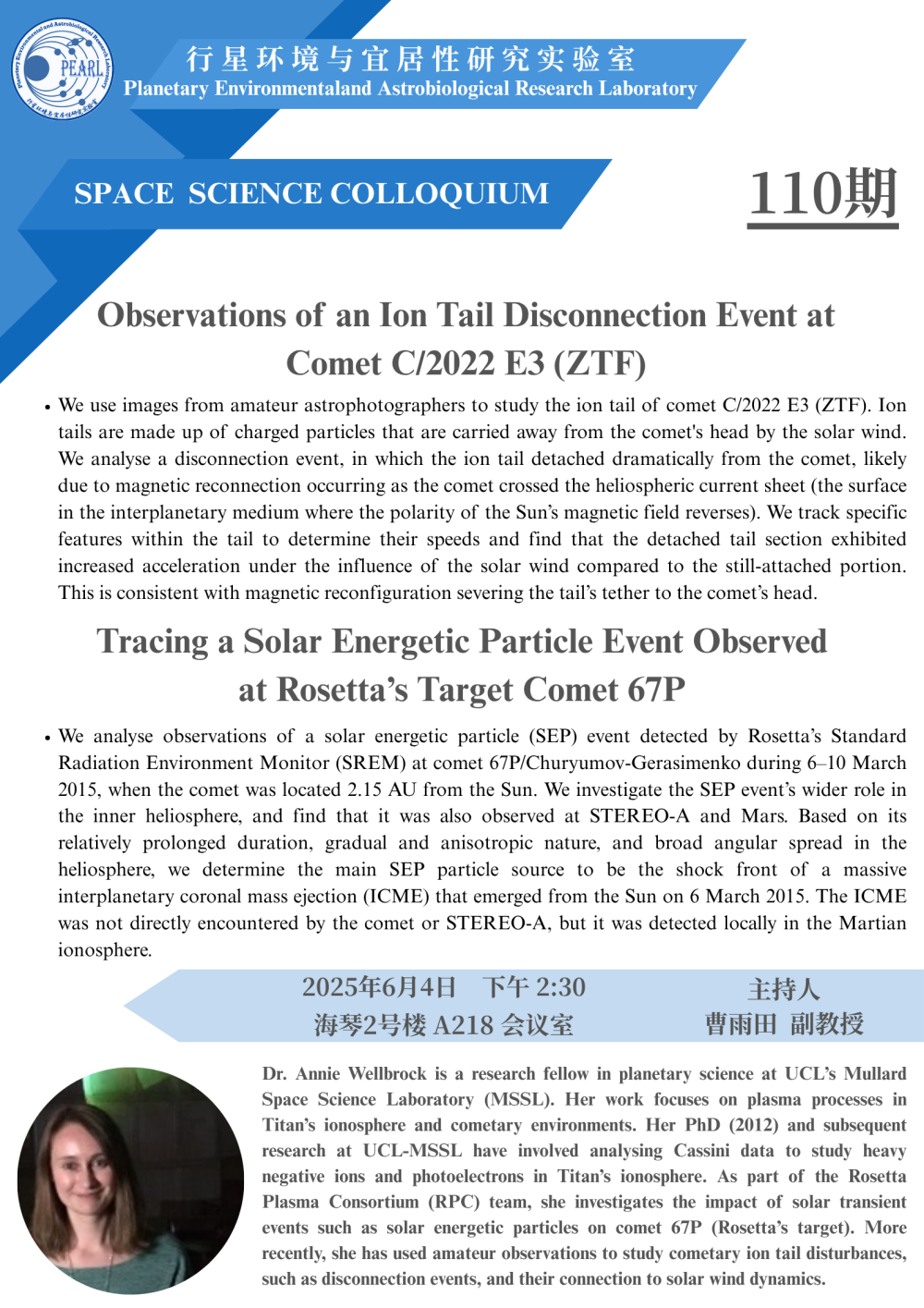Dr. Annie Wellbrock visited Sun Yat-sen University
Dr. Annie Wellbrock is a research fellow in planetary science at UCL’s Mullard Space Science Laboratory (MSSL). Her work focuses on plasma processes in Titan’s ionosphere and cometary environments. Her PhD (2012) and subsequent research at UCL-MSSL have involved analysing Cassini data to study heavy negative ions and photoelectrons in Titan’s ionosphere. As part of the Rosetta Plasma Consortium (RPC) team, she investigates the impact of solar transient events such as solar energetic particles on comet 67P (Rosetta’s target). More recently, she has used amateur observations to study cometary ion tail disturbances, such as disconnection events, and their connection to solar wind dynamics.
Tracing a Solar Energetic Particle Event Observed at Rosetta’s Target Comet 67P
We analyse observations of a solar energetic particle (SEP) event detected by Rosetta’s Standard Radiation Environment Monitor (SREM) at comet 67P/Churyumov-Gerasimenko during 6–10 March 2015, when the comet was located 2.15 AU from the Sun. We investigate the SEP event’s wider role in the inner heliosphere, and find that it was also observed at STEREO-A and Mars. Based on its relatively prolonged duration, gradual and anisotropic nature, and broad angular spread in the heliosphere, we determine the main SEP particle source to be the shock front of a massive interplanetary coronal mass ejection (ICME) that emerged from the Sun on 6 March 2015. The ICME was not directly encountered by the comet or STEREO-A, but it was detected locally in the Martian ionosphere.
Observations of an Ion Tail Disconnection Event at Comet C/2022 E3 (ZTF)
We use images from amateur astrophotographers to study the ion tail of comet C/2022 E3 (ZTF). Ion tails are made up of charged particles that are carried away from the comet's head by the solar wind. We analyse a disconnection event, in which the ion tail detached dramatically from the comet, likely due to magnetic reconnection occurring as the comet crossed the heliospheric current sheet (the surface in the interplanetary medium where the polarity of the Sun’s magnetic field reverses). We track specific features within the tail to determine their speeds and find that the detached tail section exhibited increased acceleration under the influence of the solar wind compared to the still-attached portion. This is consistent with magnetic reconfiguration severing the tail’s tether to the comet’s head.


